How Weather Affects CBD Flower Harvest: Comprehensive Guide
When it comes to producing premium-quality CBD flower weather harvest, understanding atmospheric conditions isn't just helpful—it's absolutely essential. Weather patterns can mean the difference between a bountiful harvest of potent, terpene-rich flowers and a devastating crop loss that impacts both quality and profitability.
For hemp cultivators, weather represents one of the most unpredictable yet critical variables in the growing equation. Unlike controlled indoor environments where temperature, humidity, and light cycles remain constant, outdoor and greenhouse operations face the ever-changing challenges of Mother Nature. The outdoor CBD weather conditions throughout the growing season—and especially during the crucial harvest window—directly influence cannabinoid development, terpene preservation, mold susceptibility, and overall flower quality.
The relationship between CBD hemp climate and harvest outcomes is complex and multifaceted. A single unexpected rainstorm during peak flowering can introduce mold that ruins weeks of careful cultivation. An early frost can destroy trichomes and halt cannabinoid production overnight. Excessive heat can degrade delicate terpenes, while sustained high humidity creates perfect conditions for devastating pathogens like botrytis and powdery mildew.
This comprehensive guide explores every aspect of how weather impacts CBD flower harvest, from understanding the specific threats posed by various atmospheric conditions to implementing protective strategies that safeguard your crop. Whether you're a commercial hemp farmer managing acres of outdoor cultivation or a small-scale grower tending a backyard garden, mastering weather-related harvest considerations will dramatically improve your success rate and final product quality.
Rain and Moisture: The Double-Edged Sword
Mold Risks and Pathogen Development
Understanding rain and CBD harvest dynamics is perhaps the most critical weather consideration for hemp cultivators. While moderate rainfall during vegetative growth can be beneficial, precipitation during the flowering and harvest phases presents serious risks that can quickly transform a promising crop into a complete loss.
When rainwater penetrates dense CBD flower buds, it creates the perfect microclimate for mold development. The most dangerous fungal pathogen for hemp flowers is Botrytis cinerea, commonly known as gray mold or bud rot. This aggressive fungus thrives in moist conditions and can spread rapidly through an entire plant once established. Within 24-48 hours of sustained moisture exposure, botrytis spores germinate and begin colonizing flower tissue, creating gray, fuzzy patches that destroy cannabinoid content and render flowers unusable.
Powdery mildew represents another moisture-related threat, though it paradoxically prefers moderate humidity rather than saturated conditions. However, rain events that leave foliage damp for extended periods create ideal conditions for this white, powdery fungus to proliferate across leaves and flowers. Once established, powdery mildew is notoriously difficult to eliminate and can significantly reduce harvest quality.
The interior structure of mature CBD flowers—with their dense bud formation and overlapping calyxes—makes them particularly vulnerable to trapped moisture. Water droplets cling to trichomes and plant material, unable to evaporate quickly from the compact flower structure. This trapped moisture combined with warm temperatures (above 60°F) creates a perfect incubator for fungal spores.
Emergency Harvest Decisions
When weather forecasts predict heavy rainfall during the late flowering stage, cultivators face difficult decisions about weather impact CBD flower harvest timing. The question becomes: is it better to harvest slightly early and preserve clean flowers, or risk waiting for full maturity and potentially losing the crop to mold?
Several factors influence this critical decision. First, assess the current maturity level of your plants. If trichomes show approximately 70-80% cloudy appearance with some amber coloration beginning, an emergency pre-rain harvest may yield acceptable cannabinoid profiles, even if not at absolute peak potency. However, if plants remain predominantly clear-trichomed and weeks away from maturity, early harvest will produce inferior flowers with underdeveloped cannabinoid content.
Second, consider the forecast details. A brief afternoon shower presents less risk than multiple days of sustained rainfall. Heavy, wind-driven rain poses greater threat than gentle drizzle, as it forces moisture deeper into flower structures. Temperature predictions matter too—cold rain (below 50°F) combined with poor drying conditions afterward creates maximum mold risk.
Third, evaluate your post-harvest drying capabilities. If you possess climate-controlled drying rooms with dehumidification, an emergency harvest becomes more viable since you can immediately place freshly-cut plants in optimal drying conditions. Without controlled drying facilities, harvesting wet plants and attempting to dry them in humid conditions may simply relocate the mold problem from field to drying room.
Many experienced cultivators employ a hybrid approach during rain threats: selectively harvesting the most mature and mold-susceptible plants while leaving younger, more resilient flowers to continue developing. This strategy balances quality optimization with risk management.
Protective Measures
Proactive protection strategies can help mitigate rain and CBD harvest risks without requiring emergency harvesting. For smaller-scale operations, temporary covering systems offer practical solutions. Greenhouse-style plastic sheeting supported by PVC frames can shield plants during predicted rain events, then be removed afterward to restore air circulation and prevent humidity buildup.
Proper plant spacing and pruning represent preventive measures that reduce moisture-related problems. Plants positioned with adequate spacing (minimum 4-6 feet between centers) allow air circulation that promotes faster drying after rain exposure. Strategic defoliation of lower fan leaves and interior foliage improves airflow through the canopy, helping moisture evaporate more quickly from flowers.
Application of biological fungicides containing Bacillus subtilis or other beneficial microorganisms before rain events can provide some protection by establishing competitive colonies that inhibit pathogenic fungal growth. While not foolproof, these products add an extra layer of defense during vulnerable periods.
For greenhouse cultivators, automated roof venting systems and side-wall curtains provide controllable protection, allowing you to close structures during rainfall while maintaining ventilation during dry periods. This hybrid approach captures many benefits of both indoor and outdoor cultivation.
Temperature Fluctuations: Managing Thermal Extremes
Frost Concerns and Cold Damage
Temperature extremes represent another critical dimension of CBD harvest conditions that can dramatically impact both timing and quality. Early frost poses one of the most serious threats to outdoor hemp cultivation, particularly in northern climates where the growing season ends abruptly with first autumn freezes.
CBD plants can tolerate light cold stress, with most varieties surviving brief exposure to temperatures in the upper 20s to low 30s Fahrenheit without catastrophic damage. However, hard freezes (below 28°F for extended periods) cause cell rupture in plant tissues, destroying trichomes and degrading cannabinoid content. Frozen flowers may appear superficially intact but will turn brown and mushy upon thawing, indicating cellular damage that has rendered them unusable.
The timing of frost relative to plant maturity determines its impact. A frost occurring two weeks before planned harvest when plants haven't reached peak ripeness forces emergency harvesting of underdeveloped flowers with lower cannabinoid percentages. Conversely, frost occurring when plants are fully mature may cause less concern, since you would harvest imminently anyway.
Interestingly, some cultivators report that light frost exposure (temperatures briefly dipping to 30-32°F) near harvest time may trigger a stress response that slightly increases cannabinoid and terpene production as the plant attempts to protect itself. However, this phenomenon remains controversial and should never be intentionally induced given the risks involved.
Frost protection strategies for valuable hemp crops include thermal covers (frost blankets) that trap ground heat during cold nights, irrigation-based frost protection that exploits water's heat-release properties, and strategic site selection that avoids frost pockets where cold air accumulates.
Heat Stress and Terpene Degradation
At the opposite extreme, excessive heat during the CBD flower outdoor weather critical harvest window can degrade quality in subtle but significant ways. While CBD plants tolerate high temperatures better than extreme cold, sustained heat above 86°F during flowering negatively impacts terpene preservation and cannabinoid synthesis.
Terpenes—the aromatic compounds that give hemp flowers their distinctive scent profiles and contribute to therapeutic effects—are volatile organic compounds that evaporate at relatively low temperatures. During hot weather, these precious molecules literally vaporize from trichome glands, reducing the aromatic quality and potential entourage effects of harvested flowers.
Different terpenes have varying boiling points, but many common hemp terpenes including myrcene (334°F), limonene (349°F), and pinene (311°F) begin degrading at temperatures well below their boiling points when exposed to sustained heat and UV radiation. While the terpene boiling points are high, the degradation process begins incrementally at much lower sustained temperatures above 85°F.
Heat stress also affects plant metabolism, potentially reducing cannabinoid production efficiency. Plants experiencing heat stress divert resources toward survival mechanisms (increased respiration, protective compound synthesis) rather than optimal cannabinoid development in flowers.
Visible heat stress symptoms include leaf curling, browning leaf edges, and premature yellowing of foliage. Flowers may appear bleached or develop "foxtails"—abnormal secondary growth sprouting from mature buds as the plant attempts to continue reproduction under stress conditions.
Optimal Temperature Ranges
The ideal climate for CBD hemp cultivation during flowering and harvest periods falls within a relatively narrow temperature band that promotes robust cannabinoid production while preserving terpene integrity. Daytime temperatures between 68-78°F provide optimal conditions for cannabinoid synthesis and terpene retention, while nighttime temperatures between 55-65°F allow plants to rest and recover without cold stress.
This temperature range supports the enzymatic processes that convert cannabigerolic acid (CBGA) into cannabidiolic acid (CBDA) and other cannabinoids. Temperatures significantly above or below this range reduce enzymatic efficiency, potentially limiting cannabinoid accumulation during the critical final weeks of flowering.
The temperature differential between day and night also matters. A drop of 10-15°F at night is beneficial, potentially enhancing purple pigmentation in some strains and contributing to terpene preservation. However, excessive day-night temperature swings (greater than 30°F) can stress plants and reduce quality.
Microclimate management becomes crucial for optimizing temperature conditions. Mulching around plant bases moderates soil temperature fluctuations. Strategic use of shade cloth (30-40% coverage) during heat waves protects flowers from excessive temperature and UV exposure without significantly reducing photosynthesis. For cold-sensitive periods, thermal mass techniques—such as placing water barrels near plants—absorb daytime heat and release it slowly at night, buffering against temperature drops.
Humidity Levels: The Invisible Harvest Factor
High Humidity Problems
Humidity and CBD flower quality maintain an inverse relationship—as atmospheric humidity rises, harvest quality risks increase proportionally. Relative humidity (RH) above 60% during the flowering and harvest phases creates conditions that favor multiple problems affecting both plant health and post-harvest outcomes.
High humidity environments slow transpiration—the process by which plants move water from roots through tissues and out through leaf stomata. Reduced transpiration limits nutrient uptake, potentially reducing cannabinoid synthesis during critical development periods. More importantly, slowed transpiration means plant tissues retain excess moisture, making them more susceptible to fungal colonization.
As discussed in the rain section, mold represents the primary high-humidity threat. However, humidity-related problems extend beyond visible fungal growth. Excessive moisture in flowers at harvest creates challenges for proper drying and curing. Flowers harvested with high internal moisture content require longer drying periods, during which they remain vulnerable to mold development if drying conditions aren't optimal.
Bacterial pathogens also thrive in high-humidity conditions. While less common than fungal diseases, bacterial infections like bacterial leaf spot and soft rot can damage hemp crops, particularly when high humidity combines with warm temperatures and poor air circulation.
High humidity during the harvest window also complicates harvest logistics. Attempting to cut and handle plants saturated with atmospheric moisture increases handling difficulty and may introduce water into flower structures during processing. Early morning harvests during humid conditions mean cutting plants when dew or atmospheric moisture has condensed on foliage, essentially harvesting wet plants even without recent rainfall.
Low Humidity Effects
While excessive humidity dominates cultivation concerns, unusually low humidity (below 30% RH) also presents challenges for CBD harvest season operations. Extremely dry conditions increase plant transpiration rates, potentially causing water stress even with adequate soil moisture. Plants may wilt during hot, dry afternoons, diverting energy from flower development to stress responses.
Low humidity combined with high temperatures creates ideal conditions for spider mite infestations. These microscopic pests thrive in hot, dry environments and can rapidly colonize hemp plants, causing stippling damage to leaves and potentially contaminating flowers with mite debris and webbing.
Terpene loss accelerates in low-humidity conditions as these volatile compounds evaporate more readily from trichomes when air moisture levels are low. The aromatic quality of flowers may diminish if plants experience prolonged low-humidity exposure during peak terpene production phases.
Paradoxically, while low humidity reduces mold risk, it can complicate post-harvest drying. Flowers dried in extremely low-humidity environments (below 35% RH) may dry too quickly, preventing proper chlorophyll breakdown that occurs during optimal drying. Overly rapid drying can lock in harsh, grassy flavors and create brittle flowers that crumble excessively during handling.
Monitoring Strategies
Effective humidity management requires systematic monitoring throughout the outdoor CBD weather conditions during the growing season. Digital hygrometers positioned at canopy level provide real-time humidity readings, allowing cultivators to track conditions where they matter most—within the plant canopy where flowers develop.
For larger operations, wireless sensor networks transmit humidity data from multiple field locations to centralized monitoring systems, creating detailed microclimate maps of growing areas. These systems can trigger alerts when humidity exceeds threshold levels, enabling proactive responses to emerging problems.
Humidity patterns follow predictable daily cycles in most climates. Typically, humidity rises during nighttime hours as temperatures drop and dew point approaches, then falls during daytime as temperatures increase and air's moisture-holding capacity expands. Understanding these patterns helps cultivators schedule activities (like irrigation or harvest) during optimal humidity windows.
Humidity management techniques include strategic irrigation timing (early morning watering allows evaporation before nightfall), proper plant spacing for air circulation, and selective defoliation to reduce canopy density and trapped moisture. In greenhouse operations, active dehumidification systems provide precise control, though at significant energy cost.
Some cultivators employ foliar sprays containing potassium silicate or other strengthening compounds that enhance plant cell walls, making tissues more resistant to pathogen penetration during high-humidity periods. While not a substitute for good environmental management, these products may provide marginal protection during unavoidable humidity spikes.
Wind Damage: The Overlooked Weather Factor
Trichome Loss and Mechanical Damage
Wind represents an often-underestimated aspect of weather impact CBD flower quality and yield. While moderate air movement benefits plants by strengthening stems and improving gas exchange, excessive wind causes multiple forms of damage that reduce harvest value.
The most insidious wind-related problem is trichome loss. These delicate, mushroom-shaped glands—containing the cannabinoids and terpenes that make CBD flowers valuable—attach to flower surfaces via fragile stalks that break relatively easily under mechanical stress. Strong winds cause flowers and leaves to rub against each other and against supporting stakes or structures, shearing off trichome heads in a process similar to dry sifting used to make kief.
This trichome loss isn't always immediately visible but can significantly reduce potency and value. A plant experiencing sustained high winds throughout its flowering period may lose 10-20% of its trichome population to mechanical damage, directly translating to reduced cannabinoid content in the final product. The dusty, crystal-like residue visible on leaves and supporting structures after wind events consists largely of broken trichome heads—representing lost revenue and reduced quality.
Wind damage extends beyond trichomes. Strong gusts can snap branches, particularly those heavy with mature flowers. Even without complete breakage, wind stress causes micro-tears in plant tissues that create entry points for pathogens. Repeated bending and flexing from sustained wind weakens stem structure and can cause plants to lodge (fall over), complicating harvest and potentially damaging flowers.
Salt-laden coastal winds introduce additional challenges, as salt accumulation on foliage creates osmotic stress and can burn leaf tissue. Desert winds may carry abrasive sand particles that physically damage plant surfaces.
Plant Stress and Stunted Development
Beyond immediate mechanical damage, sustained wind exposure creates chronic stress that affects CBD flower outdoor weather development and quality. Plants experiencing constant wind allocate resources toward structural reinforcement rather than flower production. This stress response manifests as thicker stems and more compact growth—desirable characteristics in moderation but detrimental when extreme.
Wind stress increases transpiration rates as moving air carries away the humid boundary layer that normally surrounds leaves. This increased water loss forces plants to close stomata earlier in the day to prevent wilting, reducing photosynthesis and potentially limiting growth. During critical flowering phases, wind-stressed plants may produce smaller flowers with reduced cannabinoid density compared to well-protected specimens.
The evapotranspirative effects of wind also complicate irrigation management. Wind-exposed plants require significantly more water than sheltered counterparts, and uneven wind patterns across a field create variable water needs that challenge irrigation scheduling. Overwatering protected areas while adequately serving exposed areas, or vice versa, becomes a constant balancing act.
Sustained wind can delay maturity as stressed plants divert energy from reproduction to survival. This delay might push harvest into less favorable weather windows, compounding problems. Additionally, wind-stressed plants may exhibit early senescence (aging), with leaves yellowing prematurely and overall vigor declining before harvest.
Windbreaks and Protection Strategies
Strategic windbreak implementation represents one of the most effective ways to improve CBD harvest conditions in exposed locations. Effective windbreaks reduce wind speed in protected areas by 50-75%, dramatically decreasing mechanical damage and stress without eliminating the beneficial aspects of moderate air movement.
Living windbreaks consisting of fast-growing trees or tall shrubs provide long-term protection but require 2-3 years to establish. Ideal windbreak species for hemp cultivation include hybrid poplars, willows, or native hedgerow plants appropriate to your region. Windbreaks should be positioned perpendicular to prevailing winds and provide protection extending 10-15 times their height on the leeward side.
For immediate protection, temporary fabric windbreaks or shade cloth barriers offer practical solutions. Heavy-duty shade cloth (50-70% density) stretched on posts creates effective wind screens that can be installed quickly and repositioned as needed. Unlike solid barriers that create turbulent downwind air patterns, porous fabric barriers slow wind velocity while maintaining generally laminar flow.
Strategic planting patterns also provide wind protection. Positioning taller, more wind-resistant plants on the windward side of your cultivation area creates natural sheltering for more vulnerable specimens downwind. This approach works well in diverse plantings or when growing multiple varieties with varying characteristics.
For greenhouse and high-tunnel operations, proper ventilation management during windy periods requires careful attention. Vents and doors should be secured or adjusted to prevent excessive air movement through structures while maintaining adequate ventilation. Automated vent systems with wind sensors can close openings automatically when wind speeds exceed safe thresholds.
Staking and trellising systems gain importance in windy locations. Sturdy stakes installed early in the growing season provide support before plants develop heavy flower loads. Horizontal support netting creates a flexible framework that supports flowering tops without restricting natural movement, reducing the leverage wind exerts on branches.
Seasonal Timing Considerations
Optimal Harvest Windows
The CBD harvest season timing varies significantly by region but generally falls within a narrow window when weather conditions, plant maturity, and pest/disease pressure intersect optimally. In most North American hemp-growing regions, this critical period extends from mid-September through late October, though southern locations may harvest into November while northern areas might complete harvest by early September.
Understanding your regional weather patterns during this window is essential for harvest planning. Historical weather data reveals patterns—for example, certain regions experience reliable dry periods in early October, while others face increasing rainfall as autumn progresses. Consulting 30-year climate averages helps identify the statistically optimal harvest timing for your location.
The concept of "beating the weather" motivates many harvest timing decisions. Rather than waiting for absolute peak maturity (which might occur during statistically unfavorable weather), experienced cultivators often harvest at 85-90% peak maturity during a favorable weather window. This approach accepts a small quality compromise to avoid much larger weather-related losses.
Strain selection significantly impacts harvest timing success. Short-season varieties that finish flowering in 50-60 days allow cultivation in regions with shorter growing seasons and provide schedule flexibility to avoid poor weather. Conversely, long-season strains requiring 90+ days of flowering may be inappropriate for regions where harvest would occur during reliably poor weather.
Multiple succession plantings—staggering planting dates by 2-3 weeks—spreads harvest across a longer window, reducing the risk that a single weather event impacts the entire crop. This strategy requires more planning and labor but provides important risk management, especially in regions with unpredictable autumn weather.
Regional Climate Variations
The climate for CBD hemp production varies dramatically across growing regions, requiring location-specific approaches to weather management and harvest planning. Pacific Northwest cultivators face autumn rain challenges but benefit from moderate temperatures and extended growing seasons. Midwest growers enjoy relatively dry autumn weather but must race against early frost. Southern cultivators harvest into late autumn but contend with higher humidity and pest pressure.
Understanding your specific regional climate patterns goes beyond simple USDA growing zones. Microclimate factors—elevation, proximity to water bodies, local geography—create significant variations even within small areas. Mountainous regions experience rapid temperature fluctuations and unpredictable weather patterns. Coastal areas benefit from oceanic temperature moderation but face higher humidity and salt exposure. Continental interior regions exhibit extreme temperature ranges and lower humidity but more predictable seasonal patterns.
Successful regional adaptation requires studying both long-term climate data and recent weather trends. Climate change has shifted traditional patterns in many regions, making historical 30-year averages less predictive than trends from the past 5-10 years. Many hemp-growing regions now experience weather variability that makes planning more difficult—later first frosts, unpredictable rainfall patterns, or unusual heat events during critical periods.
Regional pest and disease pressure also correlates with climate patterns, affecting harvest timing. Regions with high humidity and warm temperatures harbor more pathogen pressure, requiring earlier harvests to beat disease escalation. Arid regions may allow longer hang times for optimal maturity with reduced mold concerns.
Weather Forecasting Tools for Hemp Cultivators
Modern Weather Technology
Effective CBD flower weather harvest planning increasingly relies on sophisticated weather forecasting technology that provides unprecedented accuracy and detail. Modern forecasting tools allow cultivators to make informed decisions days or even weeks in advance, optimizing harvest timing and implementing protective measures before adverse conditions arrive.
Hyperlocal weather forecasting services provide predictions specific to precise GPS coordinates rather than broad regional forecasts. Services like Weather Underground, WeatherBug, and specialized agricultural weather platforms offer hour-by-hour forecasts with location-specific accuracy within 1-2 miles. This precision matters enormously—a thunderstorm passing five miles north of your farm versus directly overhead represents the difference between minor concern and emergency harvest conditions.
Weather radar technology, accessible through numerous apps and websites, allows real-time tracking of precipitation systems. Cultivators can monitor approaching rain bands, assess storm intensity, and make time-sensitive decisions about protective measures or emergency harvesting. Animated radar loops show storm movement and development, helping predict whether conditions will improve or worsen.
Extended forecasts (7-14 days out) provide strategic planning information, though accuracy decreases beyond five days. These longer-range predictions help schedule harvest operations, organize labor, and prepare equipment. While specific precipitation timing may be uncertain ten days in advance, general pattern changes (cold front arrivals, extended dry periods) appear in forecasts with useful reliability.
Specialized agricultural weather services aggregate multiple weather models, providing confidence ratings for forecasts and highlighting disagreements between different models. This meta-forecasting approach gives cultivators better understanding of forecast reliability and helps assess risk levels when making major decisions.
Monitoring and Alert Systems
Automated weather alert systems represent valuable tools for proactive weather management during outdoor CBD weather critical periods. These systems monitor forecasts continuously and send notifications when specific conditions (frost warnings, high wind alerts, heavy rain predictions) appear in forecasts for your location.
Many weather apps and services offer customizable alerts. A hemp cultivator might set alerts for: frost warnings when temperatures predict dropping below 33°F, precipitation alerts for forecasts exceeding 0.25 inches, wind warnings for sustained speeds above 25 mph, or heat advisories when temperatures predict exceeding 90°F. These automated monitors effectively provide 24/7 vigilance without requiring constant manual forecast checking.
On-site weather stations equipped with sensors that measure temperature, humidity, rainfall, wind speed, and barometric pressure provide valuable localized data. Modern stations connect to smartphone apps via WiFi or cellular networks, allowing remote monitoring and historical data analysis. Tracking your site's specific weather patterns over multiple seasons builds institutional knowledge about microclimate characteristics.
Integration of weather monitoring with cultivation management software creates powerful decision-support tools. Some platforms combine weather forecasts, soil moisture data, and plant development tracking to provide integrated recommendations about irrigation, harvest timing, and risk management strategies.
Government weather services including NOAA (National Oceanic and Atmospheric Administration) provide free, reliable forecasts and severe weather warnings. Signing up for NOAA Weather Radio alerts or following local National Weather Service offices on social media ensures access to official warnings about dangerous weather that could threaten crops.
Indoor vs. Outdoor Environmental Control
Advantages of Controlled Environments
The fundamental difference between indoor and outdoor CBD harvest conditions centers on environmental control. Indoor cultivation allows precise regulation of all climate factors—temperature, humidity, light cycles, air movement—eliminating weather-related risks that challenge outdoor growers. This control enables consistent, year-round production with predictable quality and potency.
Indoor facilities maintain optimal temperature ranges regardless of external weather. Climate control systems keep grow rooms at ideal temperatures (68-78°F during lights-on, 65-70°F during lights-off) continuously, supporting consistent cannabinoid and terpene production. Humidity control through dehumidification systems maintains RH within the optimal 45-55% range during flowering, virtually eliminating mold risks that plague outdoor cultivation.
This environmental consistency extends to harvest timing flexibility. Indoor cultivators choose harvest dates based purely on plant maturity indicators (trichome color, pistil development) without weather concerns. Harvest can occur during any weather conditions since plants remain in protected environments from vegetation through harvest.
The elimination of weather-related stress allows indoor plants to channel all resources toward cannabinoid and terpene production. Without wind stress, temperature fluctuations, or rain exposure, indoor plants potentially produce higher trichome densities and cannabinoid concentrations than outdoor counterparts, though this varies by facility quality and cultivation expertise.
However, indoor cultivation requires substantial infrastructure investment and operational costs. Climate control equipment, supplemental lighting, and ventilation systems consume significant electricity. Building costs for suitable facilities range from moderate (converted warehouses) to extreme (purpose-built grow facilities). These economic factors make indoor cultivation viable primarily for high-value production rather than bulk hemp growing.
Greenhouse Hybrid Approaches
Greenhouse cultivation represents a middle ground, capturing advantages of both indoor control and outdoor CBD flower outdoor weather benefits while mitigating drawbacks of each approach. Well-designed greenhouses leverage natural sunlight—reducing energy costs compared to indoor facilities—while providing protection from rain, excessive wind, and some temperature extremes.
Modern greenhouse technology includes automated environmental controls that adjust ventilation, supplemental heating or cooling, and humidity management based on internal conditions. Sophisticated structures feature light deprivation systems that control day length, automated shade systems that regulate light intensity, and computer-controlled vent systems that optimize air exchange.
During favorable weather, greenhouses can be fully opened to outside conditions, essentially functioning as outdoor cultivation with emergency closing capabilities. When weather deteriorates, structures can be sealed and climate-controlled, protecting crops from adverse conditions. This flexibility proves especially valuable during the harvest window when weather variability peaks.
Greenhouses excel at extending growing seasons in regions with shorter summers or earlier frost. Structures can be heated in spring to allow earlier planting and again in autumn to extend harvest windows beyond first frost. This season extension often means the difference between successful harvest and frost-destroyed crops in northern regions.
High-tunnel systems—simple, unheated hoop houses covered with plastic film—provide minimal climate control at low cost. While lacking sophisticated environmental systems, high tunnels protect from rain and wind while moderating temperature extremes through passive solar heating. For small-scale cultivators, high tunnels offer affordable middle-ground protection.
The economic viability of greenhouse cultivation depends heavily on scale, local climate, and market values. In regions where CBD hemp climate challenges make outdoor cultivation risky, greenhouse infrastructure investments may be justified by improved consistency and reduced crop losses. In more favorable climates, simple outdoor cultivation with minimal protection may offer better returns.
Climate Change and Future Considerations
Shifting Weather Patterns
Climate change is altering traditional weather impact CBD flower patterns in ways that affect cultivation planning and harvest timing. Many hemp-growing regions now experience weather variability that makes historical climate data less predictive and forces cultivators to adapt strategies continuously.
Several climate change impacts specifically affect hemp cultivation:
Extended growing seasons: Many regions now experience later first frost dates, allowing outdoor cultivation to continue longer into autumn. While potentially beneficial, this extended season also means increased exposure to autumn rainfall and later-season pest pressure. Some cultivators report that traditional harvest timing—once ideal for their region—no longer aligns with current climate patterns.
Increased extreme weather frequency: Climate change appears to increase the frequency and intensity of extreme weather events—more severe storms, unusual heat waves, unexpected cold snaps. These unpredictable extremes complicate planning and increase crop loss risks. What were once rare 50-year weather events may now occur every 10-15 years.
Precipitation pattern changes: Many regions experience altered rainfall patterns—longer dry spells punctuated by intense precipitation events rather than consistent moderate rainfall. This pattern creates irrigation challenges and increases flood/drought stress on plants.
Higher average temperatures: Warming trends affect terpene preservation and cannabinoid production, as discussed in the temperature section. Regions where hemp previously thrived in comfortable temperature ranges may now experience more frequent heat stress periods. Conversely, previously marginal northern regions may become more suitable for hemp cultivation.
Humidity shifts: Changing temperature and precipitation patterns alter humidity regimes. Some regions experiencing increased humidity face greater mold pressure, while others becoming drier may see reduced disease pressure but increased irrigation requirements and terpene volatilization.
Adaptation Strategies
Successful future hemp cultivation requires proactive adaptation to evolving climate realities rather than relying on historical patterns. Several strategies help cultivators adapt to changing CBD harvest season weather conditions:
Variety selection: Choosing hemp genetics with broader environmental tolerances—heat tolerance, mold resistance, frost hardiness—provides buffering against weather variability. Diversifying genetics across multiple varieties reduces risk that single weather events catastrophically impact entire crops.
Infrastructure investment: Installing protective infrastructure—shade systems, windbreaks, irrigation systems, greenhouse structures—becomes more economically justified as weather variability increases. The insurance value of these systems increases when extreme weather occurs more frequently.
Flexible scheduling: Maintaining multiple planting dates and utilizing varieties with different maturity periods allows harvesting across extended windows rather than concentrating all harvest timing into narrow periods potentially coinciding with poor weather.
Enhanced monitoring: Intensive weather monitoring and forecasting use helps identify favorable harvest windows and implement protective measures before adverse conditions arrive. Investment in weather stations, forecast services, and decision-support tools provides valuable returns through reduced losses.
Climate-appropriate location selection: New cultivation site selection should consider projected future climate conditions rather than purely historical data. Areas currently marginal for hemp may become ideal, while currently optimal regions may face increasing challenges.
Water management: Both drought-resistant cultivation techniques (mulching, drip irrigation, soil organic matter building) and drainage systems (preventing waterlogging during intense precipitation) gain importance as weather variability increases.
Research and Development
The hemp research community is actively investigating climate adaptation strategies, developing new varieties specifically bred for environmental stress tolerance. This work includes selections for improved heat tolerance, enhanced mold resistance, drought tolerance, and broader climate adaptability.
Some promising research directions include:
Stress-tolerant genetics: Breeding programs selecting plants that maintain cannabinoid production under heat stress, cold tolerance, or water stress will produce varieties better suited to variable future conditions.
Precision agriculture integration: Using sensors, drones, and data analytics to monitor plant health and environmental conditions in real-time enables more responsive management during weather challenges.
Regenerative farming practices: Building soil health through cover cropping, compost application, and minimal tillage creates more resilient plants better able to withstand weather stress while potentially sequestering atmospheric carbon.
As the hemp industry matures alongside climate change realities, the cultivators who succeed will be those who remain adaptable, invest in appropriate infrastructure, and continuously update their practices based on current conditions rather than historical assumptions.
Conclusion: Mastering the Elements for Optimal Harvest
Successfully navigating weather challenges represents perhaps the most critical skill for hemp cultivators pursuing exceptional CBD flower weather harvest outcomes. While we cannot control weather, understanding its impacts and implementing appropriate protective and adaptive strategies dramatically improves success rates and final product quality.
The relationship between atmospheric conditions and hemp flower quality is intricate and multifaceted. Rain introduces mold risks that can destroy crops within days. Temperature extremes—both heat and cold—damage delicate trichomes and degrade cannabinoid and terpene content. Humidity levels influence disease pressure and post-harvest drying success. Wind causes mechanical damage and chronic stress that reduces yields and quality.
Yet weather is not solely an adversary to be defended against. Moderate environmental stress can strengthen plants and potentially enhance cannabinoid production. Natural rainfall reduces irrigation costs. Outdoor sunlight provides the full spectrum radiation that supports robust terpene profiles. The key lies in understanding the difference between beneficial moderate stress and harmful extreme conditions.
Success requires a systematic approach: monitoring weather continuously, understanding your specific regional climate patterns, matching genetics to your environment, investing in appropriate protective infrastructure, and most importantly, remaining flexible and responsive as conditions change. The cultivator who rigidly adheres to traditional harvest timing regardless of current weather will eventually face significant losses, while the adaptive cultivator who monitors forecasts and adjusts plans accordingly will consistently produce superior flowers.
Technology serves as a powerful ally in this endeavor. Modern weather forecasting provides unprecedented accuracy for planning harvest timing. Environmental monitoring systems enable precise tracking of conditions within your cultivation area. Automated climate control in greenhouses or indoor facilities eliminates weather-related uncertainties entirely, though at increased cost.
Perhaps most important is developing experiential knowledge through multiple growing seasons. Each year teaches lessons about how weather affects your specific location, soil type, varieties, and cultivation methods. Keeping detailed records of weather conditions, plant development, harvest timing, and final quality creates institutional knowledge that informs future decisions.
The hemp cultivation landscape continues evolving as climate patterns shift and the industry matures. Cultivators who invest in understanding weather impacts, implement appropriate protective measures, and remain adaptable to changing conditions will consistently produce the premium-quality flowers that command top market prices. Those who ignore or underestimate weather's influence will face recurring challenges and reduced profitability.
Whether you're cultivating acres of outdoor hemp or managing a small greenhouse operation, mastering weather-related harvest considerations separates successful growers from struggling ones. The knowledge and strategies outlined in this comprehensive guide provide the foundation for weather-smart cultivation that protects your investment and maximizes the quality of every harvest.
For cultivators seeking premium genetics proven to perform across diverse weather conditions, explore the latest releases carefully selected for environmental resilience and exceptional cannabinoid profiles. Quality genetics combined with weather-informed cultivation practices create the foundation for consistently outstanding harvests regardless of what Mother Nature sends your way.
Frequently Asked Questions
What is the ideal weather for harvesting CBD hemp flowers?
Ideal CBD harvest conditions include dry weather with temperatures between 65-75°F, relative humidity between 40-50%, light to moderate wind (5-15 mph), and clear to partly cloudy skies. These conditions allow for safe harvesting while minimizing mold risks and preserving terpenes. Avoid harvesting during or immediately after rain, during extreme heat (above 85°F), or when frost threatens. Morning harvests after dew has evaporated but before peak afternoon heat often provide optimal conditions.
How do I protect my CBD crop from unexpected rain near harvest time?
If heavy rain is forecasted close to harvest, evaluate plant maturity and mold susceptibility. For nearly-mature plants showing 70%+ cloudy trichomes, consider emergency harvest before rain arrives. For less mature plants, implement protective measures like temporary plastic sheeting covers or greenhouse closure. After rain events, improve airflow by selective defoliation and increasing plant spacing where possible. Apply biological fungicides preventatively. Consider partial selective harvesting of the most vulnerable plants while leaving others to continue maturing.
Can frost damage CBD flowers completely?
Hard frost (temperatures below 28°F for extended periods) can cause severe damage to CBD flowers, destroying trichomes and causing cellular damage that ruins cannabinoid content. Light frost (brief exposure to 30-32°F) may cause minimal damage or even trigger minor stress responses that some cultivators believe enhance cannabinoid production. However, any frost risk should be taken seriously. Implement frost protection using row covers, irrigation, or emergency harvest of mature plants when frost threatens. Monitor weather forecasts closely during the critical harvest window in frost-prone regions.
What humidity level is too high for CBD flower cultivation?
Relative humidity consistently above 60% during flowering and harvest creates problematic conditions for CBD flower outdoor weather cultivation, significantly increasing mold and mildew risks. Optimal humidity ranges from 45-55% during flowering. Humidity above 70% combined with temperatures above 60°F creates ideal conditions for botrytis and other pathogens to develop rapidly. In high-humidity climates, focus on maximizing airflow, selective defoliation, proper plant spacing, and potentially covering/greenhouse protection during the wettest periods. Post-harvest drying in controlled environments becomes especially critical when harvesting in high-humidity conditions.
How far in advance can I reliably predict harvest weather conditions?
Weather forecasts are reasonably reliable 3-5 days in advance for planning purposes, with accuracy decreasing significantly beyond seven days. For harvest planning, use 7-10 day forecasts to identify potential windows of favorable conditions, but make final harvest timing decisions based on 2-4 day forecasts when accuracy is highest. During the critical harvest window, check forecasts multiple times daily as predictions update. Automated weather alerts for your specific location help ensure you don't miss important forecast changes. Combine multiple weather sources and services for the most reliable information.
Does wind damage reduce CBD flower potency?
Yes, excessive wind can significantly reduce CBD flower quality and potency through mechanical trichome damage. Strong winds cause flowers to rub against each other and supporting structures, shearing off delicate trichome heads that contain cannabinoids and terpenes. Plants experiencing sustained high winds throughout flowering may lose 10-20% of their trichome population to mechanical damage, directly reducing potency. Additionally, wind stress causes plants to allocate resources toward structural reinforcement rather than cannabinoid production. Implement windbreaks, proper staking, and protective structures in exposed locations to minimize wind damage and preserve flower quality.
Should I harvest CBD plants early to avoid bad weather?
This decision requires careful evaluation of multiple factors. If plants show 70%+ cloudy trichomes with some amber coloration beginning, emergency pre-weather harvest may be justified if significant rain, frost, or other damaging conditions are forecasted. The quality loss from harvesting slightly early (5-10% lower cannabinoid content) may be preferable to total crop loss from weather damage. However, harvesting plants that remain predominantly clear-trichomed with weeks until maturity will produce significantly inferior flowers. Consider partial selective harvesting—taking the most mature and vulnerable plants while leaving younger specimens to continue developing.
How does climate change affect CBD hemp harvest timing?
Climate change is shifting traditional CBD harvest season patterns in many regions. Many areas now experience later first frost dates, allowing extended growing seasons but also longer exposure to autumn rainfall. Increased frequency of extreme weather events—unusual heat waves, heavy storms, unpredictable cold snaps—complicates planning and increases risk. Precipitation patterns are changing, with some regions becoming wetter and others drier. Successful adaptation requires using recent (past 5-10 years) weather data rather than historical 30-year averages, selecting climate-appropriate genetics, installing protective infrastructure, and maintaining flexible harvest scheduling across multiple planting dates.
What's the best way to monitor weather for hemp cultivation?
Effective weather monitoring combines multiple approaches: hyperlocal weather forecast services that provide predictions for your specific GPS coordinates, on-site weather stations with sensors measuring temperature, humidity, wind, and rainfall at your cultivation location, automated alert systems that notify you when forecasts predict concerning conditions, and regular consultation of extended forecasts (7-14 days) for strategic planning. Government sources like NOAA provide free, reliable forecasts and severe weather warnings. Consider agricultural weather services that aggregate multiple forecast models and provide confidence ratings. Review weather data daily during the critical harvest window, increasing frequency when harvest is imminent.
Can I successfully grow CBD hemp outdoors in regions with challenging weather?
Yes, but success requires adapted strategies. Select genetics specifically bred for your climate—short-season varieties for regions with early frost, mold-resistant strains for humid areas, heat-tolerant varieties for hot climates. Invest in appropriate protective infrastructure like windbreaks, shade systems, or greenhouse structures. Implement multiple succession plantings to spread harvest across longer windows, reducing risk that single weather events impact the entire crop. Build soil health for improved plant resilience. Monitor weather intensively and maintain flexibility to harvest during favorable windows even if timing is less than ideal. Many cultivators in challenging climates successfully produce premium CBD flower outdoor weather harvests through careful planning and responsive management.

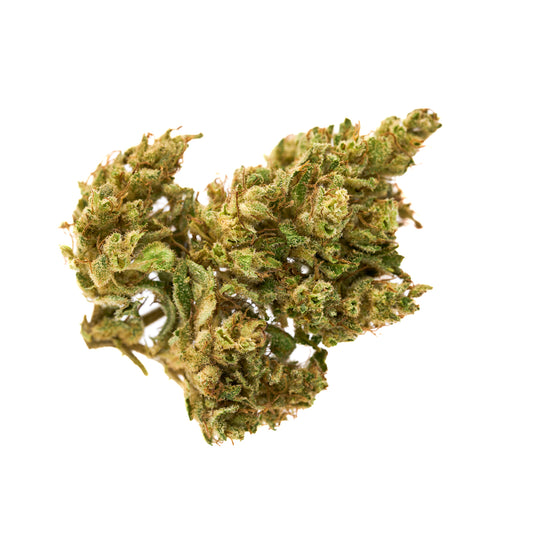
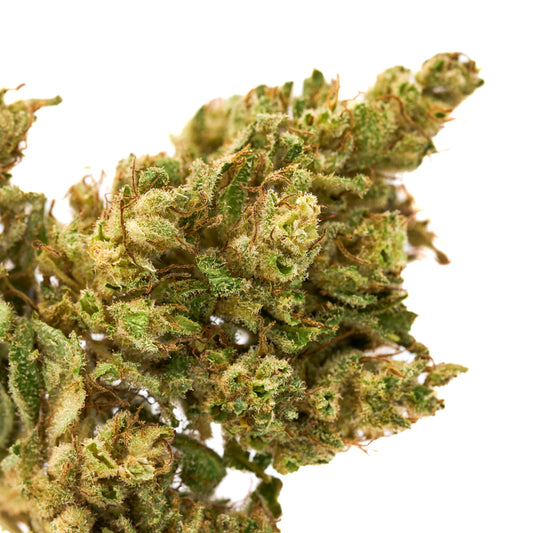
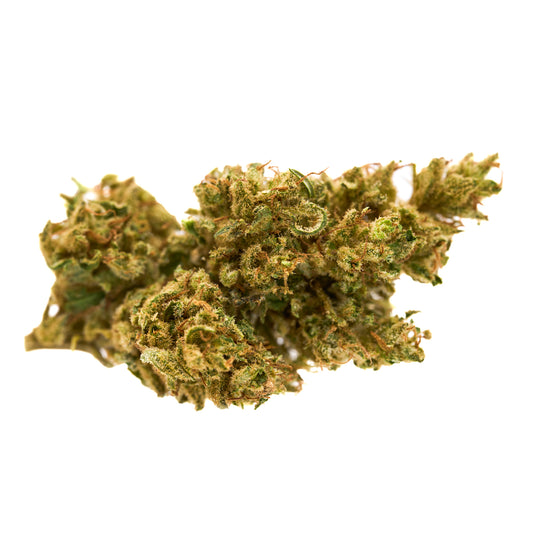

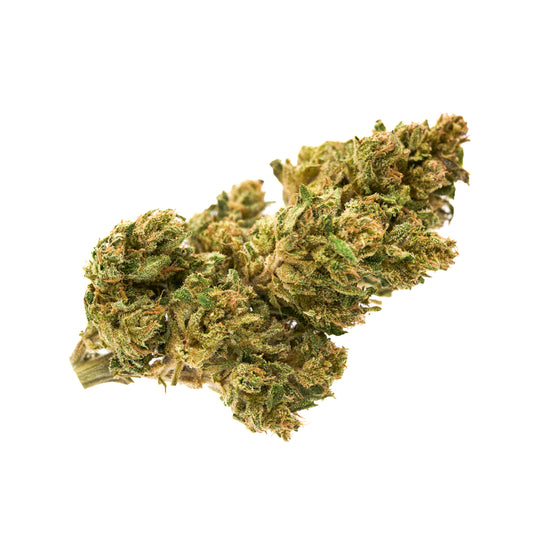




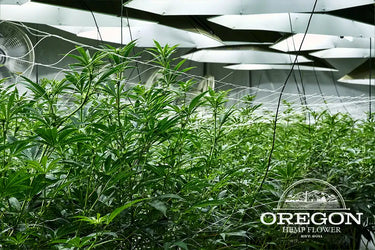

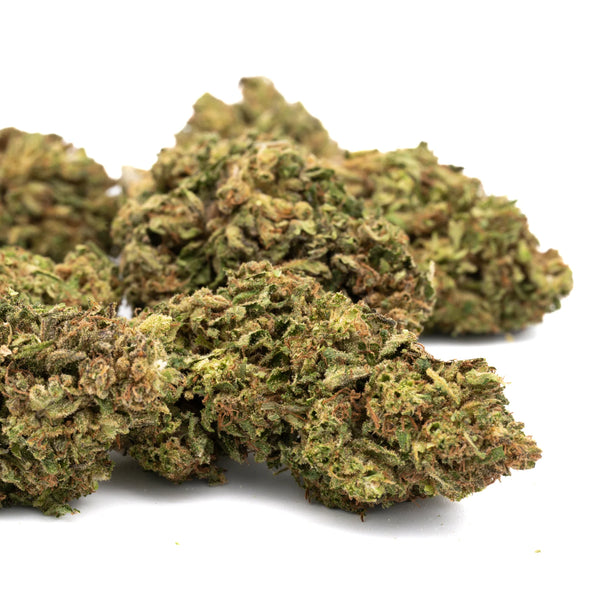
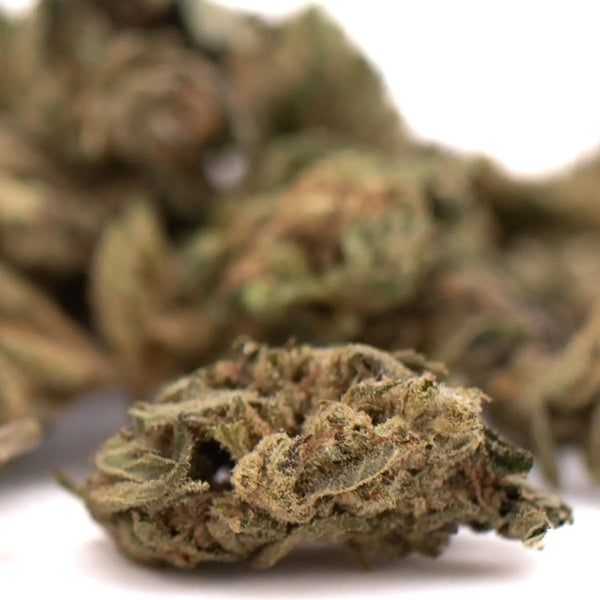
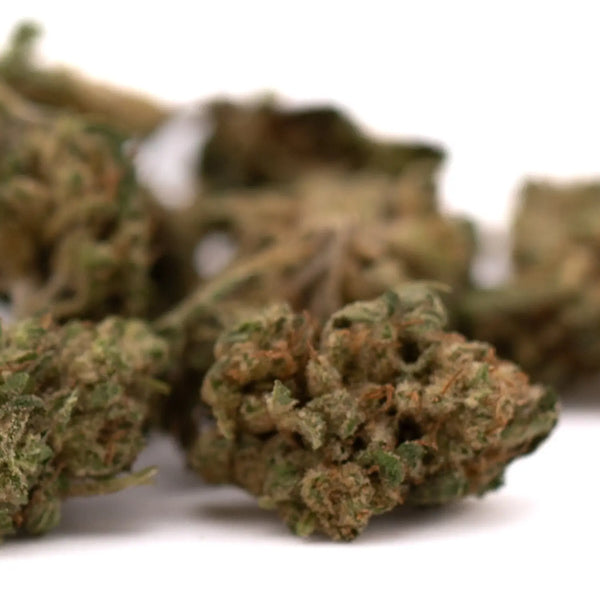
Leave a comment
Please note, comments need to be approved before they are published.